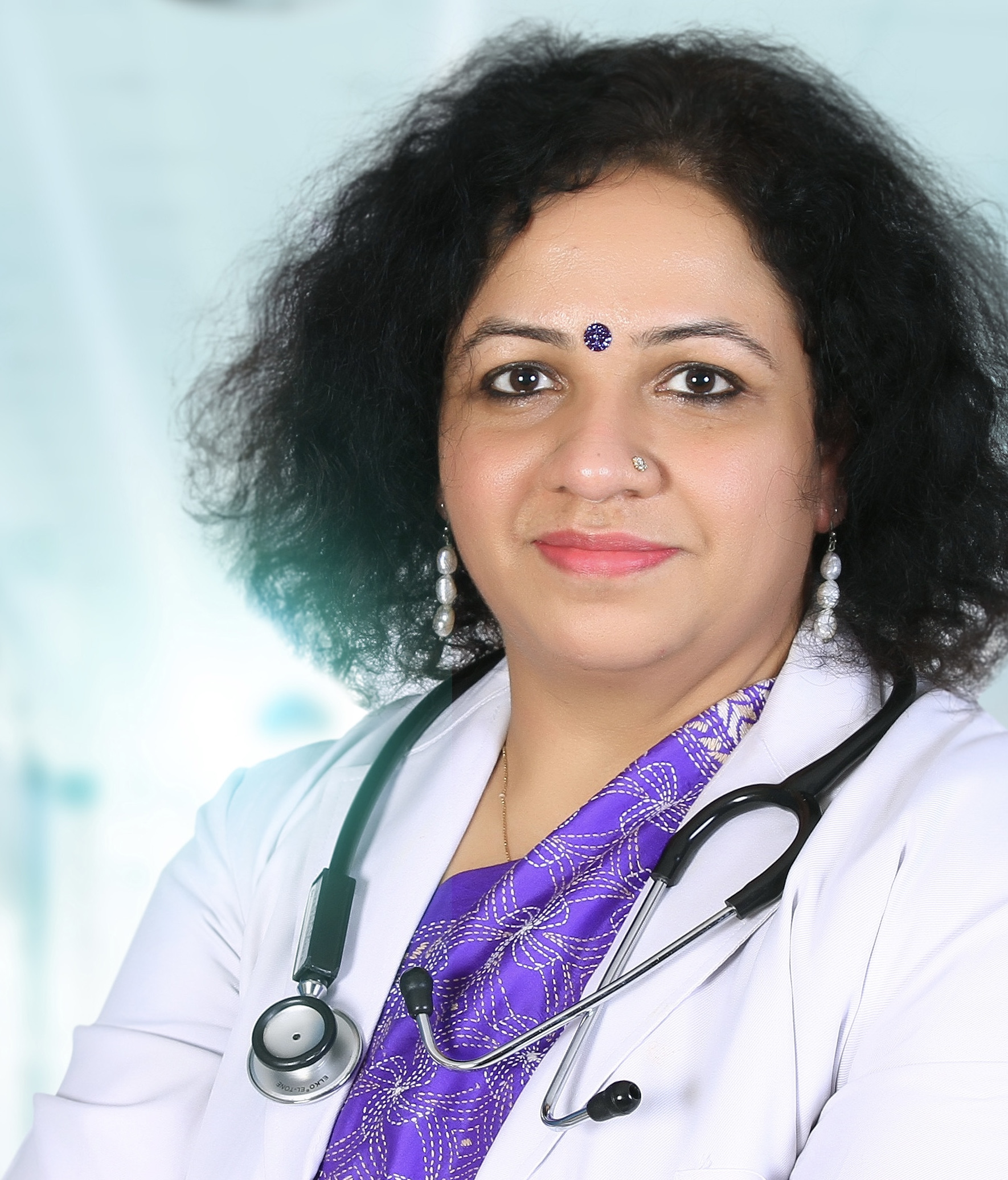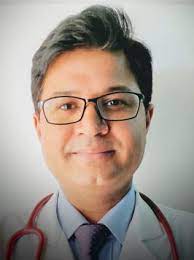
Our mission is to detect risk of cancer before it manifests, thereby reducing cancer mortality. The first step to prevent is to be aware.

Use Code ILOVEONCOFIX to Get 100% Discount

Cancer Specific Screening Protocols
Screening tests are used to find cancer before a person has any symptoms. Here are the Oncofix recommendations to help guide you when you talk to your doctor about screening for certain cancers.
Breast Cancer
Know moreBreast Cancer is the most common cancer in women in India. 27.7% of all new cancers in women, detected in India in the year 2018, were breast cancers. The incidence has been increasing at alarming rate, As per the Globocan data 2020, in India, Breast Cancer (BC) accounted for 13.5% (178361) of all cancer cases and 10.6% (90408) of all deaths. India has a predominant young population in comparison to various developed nations, hence the number of women being diagnosed with breast cancer, is on a rise. We need to take remedial measures soon.
Screening is an evaluation of an asymptomatic individual to see if there is any existing cancer. An asymptomatic individual is one who has no symptoms of cancer.
- There are various Screening Guidelines, for early detection of breast cancer. One of the most commonly accepted and followed, is the NCCN Guidelines .
- The complications and death due to breast cancer can definitely be reduced, And that can be done, only and only by 'being aware' of symptoms of breast cancer and reporting to doctor on time. This is where the screening and early detection of breast cancer can be important.
The guidelines are for women at average risk for breast cancer.
- A woman is considered to be at average risk if she doesn’t have the following
- a personal history of breast cancer,
- a strong family history of breast cancer,
- a genetic mutation known to increase risk of breast cancer (such as in a BRCA gene), and
- has not had chest radiation before the age of 30
Women at high risk of Breast Cancer
- Have a lifetime risk of breast cancer of about 20% to 25% or greater, according to risk assessment tools that are based mainly on family history
- Have a known BRCA1 or BRCA2 gene mutation (based on having had genetic testing)
- Have a first-degree relative (parent, brother, sister, or child) with a BRCA1 or BRCA2 gene mutation, and have not had genetic testing themselves
- Had radiation therapy to the chest when they were between the ages of 10 and 30 years
- Have Li-Fraumeni syndrome, Cowden syndrome, or Bannayan-Riley-Ruvalcaba syndrome, or have first-degree relatives with one of these syndromes
Screening Protocol- Breast Cancer
|
Tests |
Age |
Frequency |
|
Mammography |
< 40 yrs |
Only for women at High risk |
|
|
40-44 yrs |
Option to start screening per yr |
|
|
45-54 yrs |
Should start screening per yr |
|
|
>55yrs |
Mammogram every other year, or they can choose to continue yearly mammograms |
|
Clinical breast exam (CBE) and breast self-exam (BSE) |
Any age * |
for women at higher-than-average risk |
|
Breast Ultrasound |
Not routinely |
- For changes such as lumps (especially those that can be felt but not seen on a mammogram). dense breast tissue/ a suspicious area |
|
Breast MRI |
Not routinely |
|
|
* American Cancer Society does not recommend regular clinical breast exams or breast self-exams as part of a routine breast cancer screening schedule |
||
Various Techniques for Breast Cancer Detection
(1) MAMMOGRAMS
These are low-dose x-rays of the breast. Regular mammograms can help find breast cancer at an early stage. A mammogram can often find changes in breast that could be cancer years before actual symptoms develop. Results from many decades of research clearly show that women who have regular mammograms are more likely to have breast cancer found earlier, are less likely to need aggressive treatments like surgery and are more likely to be cured. They can’t tell for sure if an abnormal area is cancer, but they can help health care providers decide if more testing (such as a breast biopsy) is needed.
(2) Clinical breast exam (CBE) and breast self-exam (BSE)
In CBE a doctor does a detailed examination of the patient including breast and takes the detailed history of the patient with the aim to detect any suspicious abnormality.
In BSE the lady has to increase her familiarity with her breast. A self examination can be done monthly preferably while taking a bath, just after the end of menses. Any abnormality would thus be detected earlier
(3) BREAST ULTRASOUND
Breast ultrasound uses sound waves and their echoes to get images of the inside of the breast. It can show certain breast changes, like fluid-filled cysts, that can are difficult to be detected by a mammograms. Ultrasound is not typically used as a routine screening test but it can be useful for looking at some breast changes, such as lumps in women with dense breast tissue. It can also be used to get a better look at a suspicious areas detected on mammogram.
(4) BREAST MRI
Breast MRI (magnetic resonance imaging) uses radio waves and strong magnets to make detailed pictures of the inside of the breast. Breast MRI is not recommended for regular screening however, for certain women at high risk for breast cancer, a yearly breast MRI is recommended along with a yearly mammogram. MRI is not recommended as a screening test by itself, because it can miss some cancers that can be detected by a mammogram.
(5) BREAST BIOPSY
If there is a palpable breast lump or the results of an imaging test (such as a mammogram) suggest you might have breast cancer, you may need a breast biopsy. During a biopsy, a doctor removes small pieces of breast tissue from the suspicious area and it is seen under a microscope to detect cancer cells.
- Risk of developing breast cancer can be calculated by various means, the commonest is based on the GAIL model, for women above 35 years of age. After this calculation, if the 5 year risk of developing a breast cancer is greater than 1.7%, the women is considered to be at an 'increased' risk of developing breast cancer and must follow the 'increased risk' guidelines. If the 5 year risk is less than 1.7%, the woman is considered to be at a 'normal' risk for breast cancer and may follow the 'normal risk' guidelines.
To learn more about breast cancer
Colon Cancer
Know more
|
|
COLORECTAL CANCER SCREENING
Colorectal cancer (CRC) is one of the most frequently diagnosed cancer. Screening of average-risk or no risk individuals can reduce CRC mortality by detecting cancer at an early, curable stage . Timely screening may decrease CRC incidence by detecting and removing polyps.The importance of early detection can be realised from the fact that localized CRC have a 90% relative 5-year survival rate, whereas rates for those with regional and distant disease are 71% and 14%
As per most of the international guidelines if you do not have any high risk factor for colon cancer like family history or genetic predisposition , screening to be started at 45 yrs .
Screening of colon cancer in patients less than 45 years is recommended only one has one of this features.
- A personal history of colorectal cancer or certain types of polyps
- A family history of colorectal cancer
- A personal history of inflammatory bowel disease (ulcerative colitis or Crohn’s disease)
- A confirmed or suspected hereditary colorectal cancer syndrome, such as familial adenomatous polyposis (FAP) or Lynch syndrome (hereditary non-polyposis colon cancer or HNPCC)
- A personal history of getting radiation to the abdomen (belly) or pelvic area to treat a prior cancer
Screening Protocol- Colon cancer
|
Risk Factors |
Age (yrs) |
Tests and frequency |
|
People with one or more family members who have had colon or rectal cancer |
At 40 or 10 years before the age that the immediate family member was diagnosed with cancer. |
Colonoscopy only instead of other tests More frequent screening, Genetic counseling for Lynch Synd |
|
People who have had radiation to the abdomen (belly) or pelvic area to treat a prior cancer |
Screening often begins 5 years after the radiation was given or At age 30 whichever comes last |
colonoscopy or stool based testing, more frequent screening (such as at least every 3 to 5 years). |
|
People with inflammatory bowel disease (Crohn’s disease or ulcerative colitis) |
8 years after they were diagnosed with IBD |
Colonoscopy Done every 1 to 3 years, depending on the person’s risk factors |
|
People known or suspected to have certain genetic syndromes |
begin at a young age, possibly even teenage years for some syndromes |
Colonoscopy only |
Test options for colorectal cancer screening
|
TESTS |
FREQUENCY |
|
Stool-based tests |
|
|
Highly sensitive fecal immunochemical test (FIT) |
every year |
|
Highly sensitive guaiac-based fecal occult blood test (gFOBT) |
every year |
|
Multi-targeted stool DNA test (mt-sDNA) |
every 3 years |
|
Visual (structural) exams of the colon and rectum |
|
|
Colonoscopy |
every 10 years |
|
CT colonography (virtual colonoscopy) |
every 5 years |
|
Flexible sigmoidoscopy (FSIG) |
every 5 years |
the most important thing is to get screened, no matter which test you choose.
For people at increased or high risk
- People at increased or high risk of colorectal cancer might need to start colorectal cancer screening before age 45, be screened more often, and/or get specific tests.
- The American Cancer Society does not have screening guidelines specifically for people at increased or high risk of colorectal cancer.
- However, some other professional medical organizations, such as the US Multi-Society Task Force on Colorectal Cancer (USMSTF), do put out such guidelines.
Colonoscopy
A colonoscopy allows the doctor to look inside the entire rectum and colon while a patient is sedated. A flexible, lighted tube called a colonoscope is inserted into the rectum and the entire colon to look for polyps or cancer. During this procedure, a doctor can remove polyps or other tissue for examination. The removal of polyps can also prevent colorectal cancer.
If the procedure is to be complete and accurate, the colon must be completely cleaned, and there are several different colonoscopy preparations. Patients are given detailed instructions about the cleansing preparation. In general, this consists of drinking a large volume of a special cleansing solution or several days of a clear liquid diet and laxatives or enemas prior to the examination. These instructions should be followed exactly as prescribed or the procedure may be unsatisfactory (visualization of the lining of the colon may be obscured by residual stool), and it may have to be repeated, or a less accurate alternative test must be performed in its place.
To learn more about screening procedures you can read at
https://www.oncofix.com/learn/102
Cervix Cancer
Know moreCervical Cancer Screening
Why is cervical cancer screening required ?
Cervical cancer usually takes 3 to 7 years for high-grade changes in cervical cells to become cancer. Screening tests may detect these changes before they become cancer.
Cervical cancer screening saves lives. Cervical cancer screening if done at right time can prevent the chances of cancer deaths due to cervical cancer almost to half.
What are the ways to do the cervical cancer screening test?
 There are two ways of doing cervical cancer screening test . They are
There are two ways of doing cervical cancer screening test . They are
- Pap Test
The screening process is simple and fast. You lie on an exam table and a speculum is used to open the vagina. The speculum gives a clear view of the cervix and upper vagina.
The cells are sent to laboratory to look for abnormal cells
- HPV test
The samples which are taken for Pap smear can be used for HPV testing as well.
When should I get Cervical screening testing done ?
Cervical cancer screening is an important part of women’s health care. There are various international guidelines for when to start screening for cervical cancer . You should start having screening at age 21, regardless of when you first start having sex..
- Cervical Cancer Testing
-
- Pap smear can start at 21 years of age.
- Starting at age 25 and through age 65, all people with a cervix should have a primary HPV test* every 5 years.
- If a primary HPV test not available
- co-test (an HPV test done at the same time as a Pap test) every 5 years or
- Pap test alone every 3 years.
-
(*A primary HPV test is an FDA approved test that is done by itself for screening)
- High risk of cervical cancer
- Suppressed immune system (Ex HIV infection, long-term steroid use or organ transplant)
- Exposure to DES in utero
- History of a serious pre-cancer *
When should I stop screening for cancer?
Women can stop screening for cancer at the age of 65 if
- They have had either three negative Pap test results in a row
- two negative HPV tests in a row, or two negative co-test results in a row within the past 10 years
- The most recent test should have been performed within the past 3 or 5 years, depending on the type of test
- Even patients who have undergone Hysterectomy should undergo Cervical cancer Screening as cervical cells may still be present over vagina.If you have a history of cervical cancer or high-grade cervical cell changes, you should continue to have screening for 20 years after the time of your Hysterectomy .
How can I protect myself from Cervical cancer?
The HPV vaccine is an important way to help protect against the HPV infections that most commonly cause cancer. But the HPV vaccine does not protect against all types of HPV that can cause cancer. So women who have been vaccinated against HPV still need to follow the cervical cancer screening recommendations for their age group.
Lung Cancer
Know moreLung Cancer Screening
Screening means testing for a disease when there are no symptoms or history of that disease. It is recommended to find a disease early, when treatment may work better.
Who should be screened?
Lung Cancer Screening is recommended for 50 years or older, with smoking history of greater than 20 pack years . Pack years is the number of packs of cigarettes per day multiplied by the number of years smoked.
Screening procedure
The only recommended screening test for lung cancer is low-dose computed tomography (also called a low-dose CT scan, or LDCT).
During an LDCT scan, you lie on a table and an X-ray machine uses a low dose (amount) of radiation to make detailed images of your lungs. The scan only takes a few minutes and is not painful.

Side effects of Screening ?
Radiation from repeated LDCT tests can cause cancer in otherwise healthy people.
That is why lung cancer screening is recommended only for adults who are at high risk for developing the disease because of their smoking history and age, and who do not have a health problem that substantially limits their life expectancy or their ability or willingness to have lung surgery, if needed.
If you are thinking about getting screened, talk to your doctor. If lung cancer screening is right for you, your doctor can refer you to a high-quality screening facility.
Advise
- The best way to reduce your risk of lung cancer is to not smoke and to avoid second hand smoke. Lung cancer screening is not a substitute for quitting smoking.
- Stay away from tobacco
- Get to and stay at a healthy weight
- Get moving
- Adults- At least 150-300 minutes/ wk of moderate-intensity physical activity
75-150 minutes of vigorous-intensity activity (or a combination of these).
-
- Teens- Get at least 1 hour of moderate or vigorous intensity activity every day.
5. Eat healthy
It's best not to drink alcohol or restrict alcohol
When Should Screening Stop?
lung cancer screening should be stopped when —
- Turns 81 years old, or
- Has not smoked in 15 or more years, or
- Develops a health problem that makes him or her unwilling or unable to have surgery if lung cancer is found.
Prostate Cancer
Know morePROSTATE CANCER SCREENING
Prostate cancer is a disease of elderly male. With age, the prostate size gets bigger which may block the flow of urine from the bladder and cause problems with sexual function. As long as there is only increase in size without any cancer , it is called as Benign Prostatic Hyperplasia (BPH). The symptoms of benign prostatic hyperplasia or of other problems in the prostate may be similar to symptoms of Prostate cancer , hence it is better that one follows the screening recommendation for prostate cancer as per his age.
- Prostate Cancer Screening
- Prostate screening starts at age 55.
- Between the age group of 45-54, only men at higher than average risk of prostate cancer should discuss and decide if they want to be tested
- This includes African American men and men with close family members (father, brother, son) who had prostate cancer before age 65.
Risk factors for Prostate Cancer
-
- Age-
- Prostate cancer is rare in men younger than 40, rapidly rises after 50.
- About 6 in 10 cases of prostate cancer are found in men older than 65.
- Age-
-
- Race/ Ethnicity
- More in African American men
- less often in Asian American and Hispanic/Latino men
- Race/ Ethnicity
-
- Geography
- Most common in North America, northwestern Europe, Australia, and on Caribbean islands. It is less common in Asia, Africa, Central America, and South America.
- Family History of prostate cancer
- Have at least one first-degree relative (such as your father or brother) who has had prostate cancer
- Have at least two extended family members who have had prostate cancer
- Geography
-
- Genetic factors (BRCA1, BRCA2, HNPCC etc)
- Previous history of Prostatitis
- Are African-American, an ethnicity that has a higher risk of developing more aggressive cancers
Screening for Prostate Cancer
- Digital Rectal examination can be done after explaining the procedure to patients
- Prostate-Specific Antigen (PSA) Blood test is the gold standard for screening of prostate cancer.
- The PSA levels go up in most of the cases (>4ng/ml)
- Sensitive not very specific
- Can rise in various other conditions such as BPH, Prostatitis, old age, surgical procedures, few medicines
- Types of Prostate specific Antigen
- Free PSA ( with lower percent-free PSA the likelihood of having prostate cancer is higher)
- Total PSA
- Prostate Cancer gene 3 (PCA 3 Gene) can also be done
If the result of one of these tests is abnormal, you will probably need a prostate biopsy, to know for sure if you have cancer.
General Healthy Tips
- Stay away from tobacco
- Get to and stay at a healthy weight
- Get moving
- Adults- At least 150-300 minutes/ week of moderate-intensity physical activity
- 75-150 minutes of vigorous-intensity activity (or a combination of these).
- Teens- Get at least 1 hour of moderate or vigorous intensity activity every day.
- Adults- At least 150-300 minutes/ week of moderate-intensity physical activity
- Eat healthy
- It's best not to drink alcohol or restrict alcohol
To know more about early detection
https://www.oncofix.com/learn/100
Head and Neck cancer
Know moreHEAD AND NECK CANCER SCREENING
The term “head and neck cancer” encompasses a wide range of tumours that occur in several areas of the head and neck region . It includes various cancers
- Arising from mouth ( Tongue, buccal mucosa etc)
- Nasal passages
- Sinuses
- Throat
- Larynx (voice box)
- Swallowing passages
- Salivary glands
- Thyroid gland.
It is seen more commonly in people who consume tobacco and heavy use of alcohol. The chances of relapse after treatment of these types of cancer is very common. Individuals with a premalignant lesion in the mouth known as dysplastic oral leukoplakia have an almost 30 percent risk of oral cancer at ten years after treatment. Individuals with the following diseases and syndromes are at increased risk for head and neck cancer: Fanconi anemia, a rare, inherited disease in which the bone marrow fails to function properly; Li-Fraumeni syndrome, a rare, inherited disorder that greatly increases the risk of developing several types of cancer; and Plummer-Vinson syndrome, a disorder characterized by long-term iron deficiency anemia, which causes swallowing difficulty.
A type of cancer of the head and neck known as head and neck squamous cell carcinoma (HNSCC).Twenty-five percent of HNSCCs harbor human papillomavirus (HPV), a commonly occurring virus that may play a role in the development of head and neck cancer. Non-squamous cancers of the head and neck — which include tumors of the thyroid, skin adnexa, salivary glands, sarcomas, and lymphomas — are even more uncommon
Currently, there are no screening methods that have been proven to increase survival rates for HNSCC. However few screening modalities which are suggested are …
- Physical examination of the neck, oropharynx (the middle section of the throat that includes the soft palate, the base of the tongue, and the tonsils), and the mouth has been widely adopted as part of a routine dental examination.
- However, there is no evidence that this intervention reduces mortality from oral cancer. It is likely that in the coming decades this routine screening will allow earlier identification of oral cancer, when it is in a less advanced form, but this has yet to be proven in clinical studies.
Meet Our Doctors

Dr. Meena Mishra
Radiation oncologist
MD (Radiation Oncology)Consultant, Previously- Associate consultant, Fortis Memorial Research Institute, Gurgaon Senior Resident....

Abhishek Pathak
Medical Oncologist
MD (Gen Med), DNB (Gen Medicine), MNAMS FRCP (Glasg), DNB (Medical Oncology), European Certified Medical Oncology (ECMO)....

Dr. Venkata Pradeep
Babu K MD, DRNB, ECMO, MNAMS
MD (Radiation Oncology)Consultant, Previously- Associate consultant, Fortis Memorial Research Institute, Gurgaon Senior Resident....